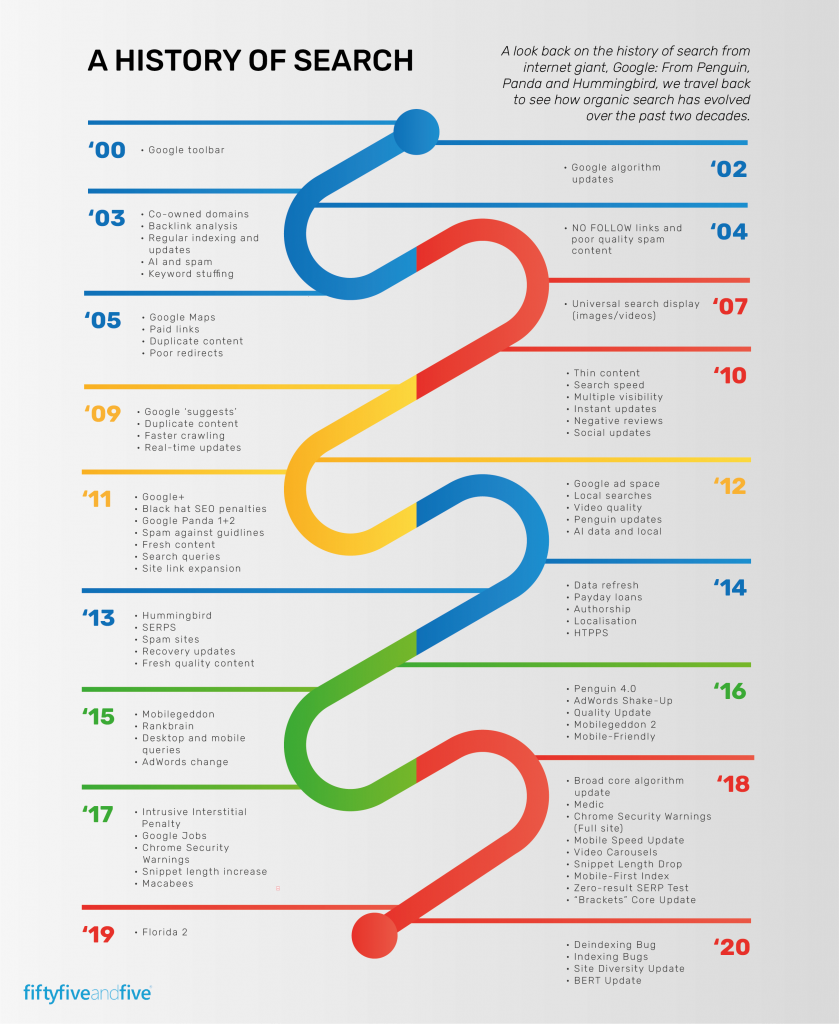Have you ever searched for a term or product, then had to wade through a sea of ads before you could find what you were looking for? What’s even more frustrating is seeing the same ads over and over again. As a social media firm and B2B marketing agency, Bluetext knows there’s a fine line between getting your message in front of users and overdoing it.
Ad fatigue, the term for “when your audience sees your ads so often that they become bored with them and stop paying attention,” can be costly and can make your advertising ineffective. Over the years, as a social media firm and B2B marketing agency, we’ve found several of the most effective ways to avoid ad fatigue. Keep reading to learn 4 ways you can avoid wasting your paid media budget:
1. Decrease Ad Frequency
The best and most obvious way to decrease ad fatigue is by limiting the number of times a user sees your ad. Unless you place a frequency cap or have an audience of millions, advertising platforms will continuously serve your ads to the same users. For the user, this can be frustrating and can even turn them away from your brand. In fact, AdEspresso conducted a study to see the impact of ad fatigue on Facebook and found the following results:
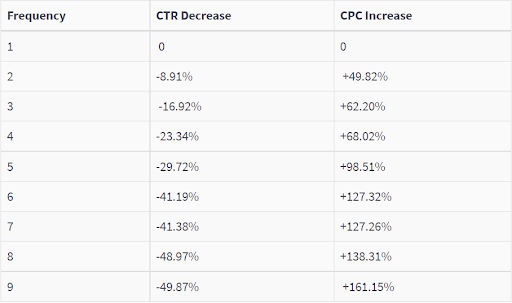
In this study, as frequency increased, CTR decreased and CPC increased. Of course, there is no one size fits all approach to frequency; that said, however, through our time as a B2B marketing agency, we recommend making changes if frequency surpasses 4 or 5 on Facebook.
2. Refresh. Refresh. Refresh.
Another great way to reduce ad fatigue is by updating your creative frequently. By doing so, users get to see fresh ads all the time. Your company and message may remain the same, but a new visual approach will catch the eye and give the impression of a new, shiny nugget of content. If you don’t have the resources to constantly update your ad creative, something as simple as adjusting the description text, links, or CTAs on Facebook, LinkedIn, and other social platforms can help refresh your content. Otherwise, a social media firm, like Bluetext, can be a helpful resource for achieving scalable creative production.

3. Test Your Audiences
One of the most important ways to optimize your creative and reduce ad fatigue is by A/B testing your creative. From CTAs to copy, A/B tests can vary in goals. It’s vital, however, that you run the test for long enough to reach a large enough sample size. Using a sample size calculator is the best way to ensure your audience is large enough to reach statistical significance.
4. Create Custom Segments
By creating custom audience segments, you can exclude users who have already completed the desired action on your landing page. In turn, you can avoid overwhelming users and make sure you’re spending your media dollars as efficiently as possible. With custom segments, you can also create retargeting audiences. With specific retargeting and dynamic creative, you can serve customized content to users based on their previous search queries and interests.
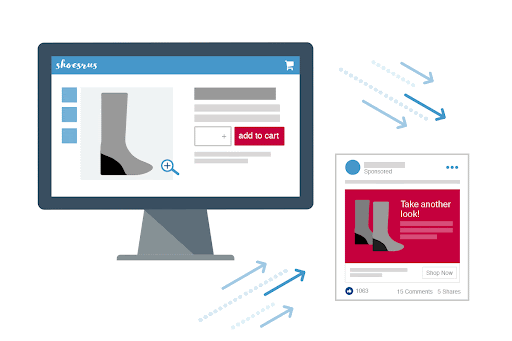
Needless to say, ad fatigue negatively affects campaign performance by increasing CPCs, decreasing CTRs, and frustrating users. Taking steps, like the ones listed above, to combat ad fatigue will ensure you are spending your money efficiently and keep your audience engaged.
Interested in working with a social media firm and b2b marketing agency to ensure your ads have a positive lasting impact? Contact us here!
TikTok — the clock is ticking on traditional advertising strategies. As conventional methods wane, a new star player, TikTok, is making waves. At inception, TikTok gained a sticking association with Gen Z via dance videos & lip-syncing parodies. It’s true, TikTok is a popular platform for many teens or young adults to create and send entertaining video content. However, this platform is not just a fleeting fad, but very much here to stay and continue to evolve.
Like any trend, TikTok’s high number of young users caught the attention of older demographics. All wanting to know “what the cool kids are doing”, TikTok’s user base matured. As of March 2021, research found that teenagers are only 25% of the TikTok audience. Who are the rest? Well, it’s a pretty even split of users in their 20s, 30s, and 40s, with even a significant slice of people 50 years and older!
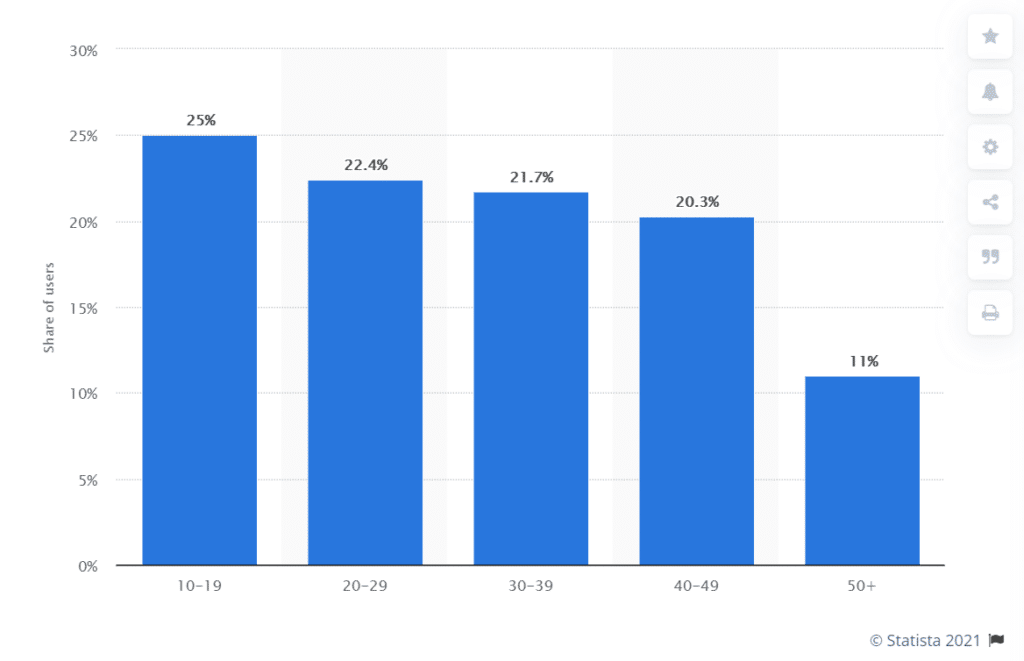
A more diverse user base brought new opportunities, as marketers observed new niche categories rise in popularity. For example, trending hashtags such as #financetok or #taxadvice providing financial advice to users during tax season. Just one of the many unique use cases of the social media platform, as everything from investing to cleaning hacks, has been reenergized by the fun, engaging nature of video clips.
So what does this mean? Well, it’s time that digital marketers begin to take TikTok seriously. Here’s why:
1.Video Content is on the Rise
Video content is on the rise — and won’t pause anytime soon. That’s why popular video publishing platforms, TikTok and Vimeo, have joined forces to become an advertising powerhouse. Recent updates have integrated Vimeo creation tools with TikTok AdManager. This enables businesses of any size to create and publish ads directly to TikTok Ads Manager. Effectively breaking down prior production banners, smaller and medium-sized businesses can easily create and distribute engaging video ads at low cost. Going a step beyond, Vimeo offers ad templates specifically optimized for the TikTok platform. Known as Spark Ads, this format allows businesses to take organic content and quite literally re-energize ads on a new short and snippy platform.
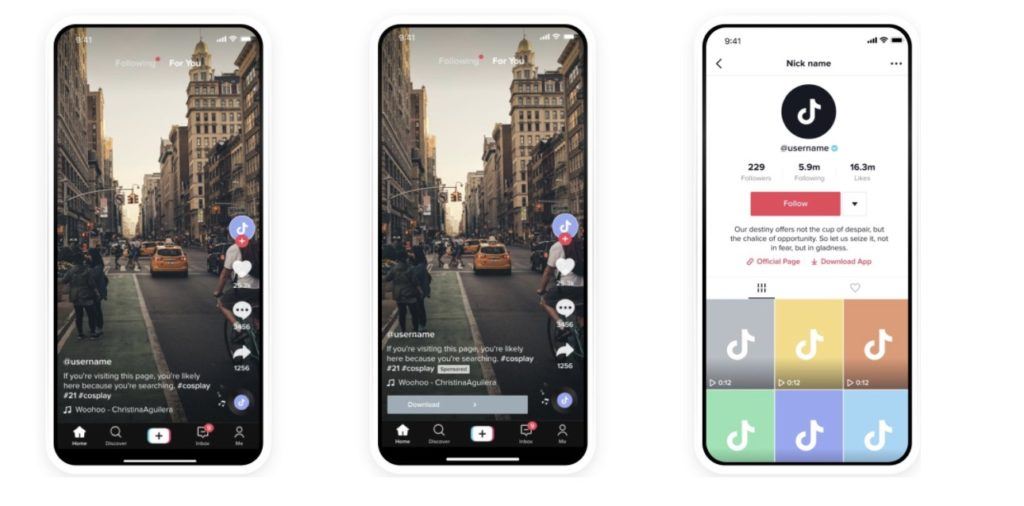
2. Self-Served Success
Speaking of the TikTok AdManger, a few of the hallmarks of this platform are the self-service ad publishing, creator marketplace, and other features that empower content creation. With an easy-to-use publishing experience, it allows for more experimentation and freedom with campaign concepts, creative or targeting. The format pushes brands to make their advertisements everything they should be: short, succinct, and engaging. Time limitations force marketers to cut the extraneous details that users wouldn’t retain anyways and hone in on a single direct message. It’s like the bootcamp marketers didn’t know that they needed.
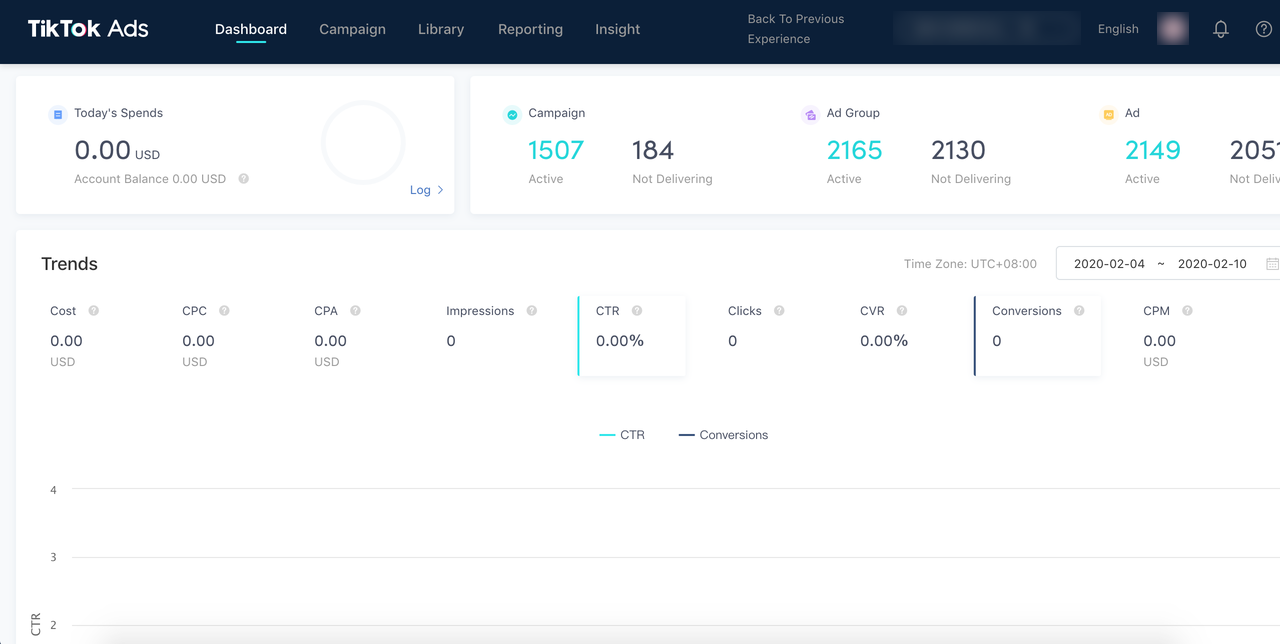
3. Live it Up
That’s right, TikTok has jumped on the trend of live streaming video content (thank you Instagram & Facebook). While this has playful applications, it’s also a prime opportunity for commentary from thought leaders and brand ambassadors on new product launches, industry events, or current trends. Live stream content has been popularized on alternative platforms (looking at you, Facebook & Instagram) for hosting Q&As and panel discussions. New TikTok features allow both the scheduling & promotion of a live-streamed event but also co-hosting to allow for multiple speakers. This creates a split-screen view and allows hosts to interact one-on-one with another, and with live audience comments.
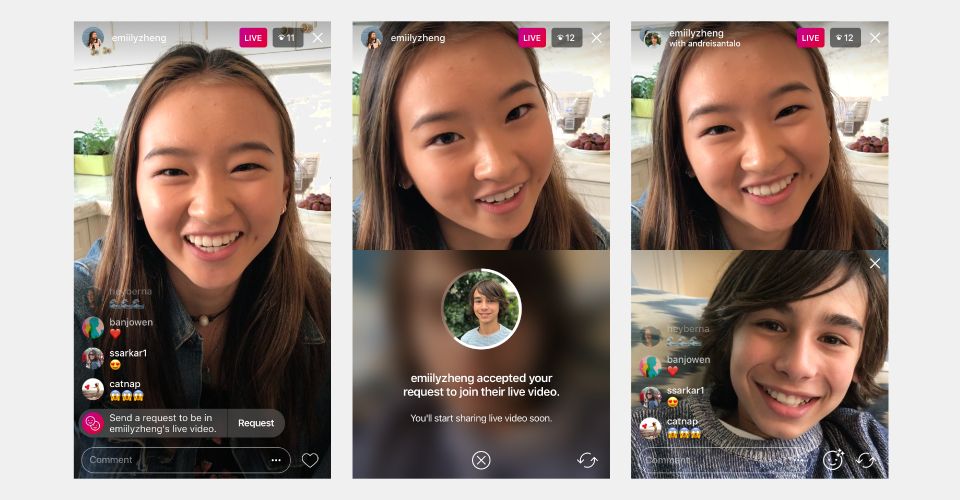
While the first wave of use cases for these features may be tied to e-commerce and pop culture, it will be the next wave of marketing pioneers who bring a more practical flavor to the platform. Facebook and Twitter started out as purely ‘social’ social media platforms, but look what business opportunities have arisen from there. TikTok will be no different, and the businesses that invest now in their video content creation and production skills will have the upper hand.
Need to amp up your video & social media marketing? Contact Bluetext to learn more about our creative & digital marketing services.
Search marketing has powerful potential with infinite nuances. This digital marketing medium has an unmatched ability to reach mass users at a macro level on the basis of targeted browsing & interest. Search marketing is a demand-driven opportunity to engage in individual conversations at a mass scale. Just like the phrase implies, the ‘world wide web’ is an incredibly complex and interconnected ecosystem of users, websites, search queries, and advertising. So how and where should you start to navigate the infinite avenues of search marketing? First, consult a digital marketing agency, especially one which specializes in marketing analytics & paid media strategy like Bluetext.
A digital marketing agency can offer search marketing services that you help identify: your website user personas, what organic keywords are bringing traffic to your site, what keywords & phrases have the optimal cost-per-click (CPC), and competitive density for paid search efforts.

Automation: the Answer to Search Marketing
Basic search marketing strategy connects a user’s intent to an ideal and relevant response. Automated search marketing strategy uses automation to constantly improve and become more efficient and effective over time. A basic search strategy can be simple to set up and understand, but results may flatline without consistent nurturing. Automated search marketing can be complex and intimidating, but when set up correctly, can yield impressive and compounding results.
Some search marketers have been hesitant to embrace automation and trust algorithms and data processing power. However, avoiding the advancement of automation only hurts your strategy and puts you at a competitive disadvantage in comparison to more future-focused competitors.

Search engine tools have matured over time to provide increased control, transparency, and tangible results than ever before. Real-time automation has evolved to be the foundation of the search engine ecosystem. What was once an analog concept (imagine a physical directory) has been transformed into a dynamic digital medium. The modern search marketing experience is an always-on, cross-device experience capable of delivering almost any type of content a user is looking for.
The key aspect to keep in mind with search marketing is its dynamic nature. New features and improvements are constantly being implemented, with new queries and signals added every second. Hundreds of data points are aggregated for every interaction. The term “big data” is an understatement to summarize the sheer volume of data that can be collected and harnessed to provide the most personalized experience to users possible.
Finding the Right Search Strategy
Search marketing is not a one size fits all solution. The optimal strategy should be assessed by individual companies and use cases. To inform your strategy, it is key to fully understand how your paid or organic search terms have performed in the past. Past bidding and budget history can provide not only a baseline for improvements but insight into your audience and receptiveness to paid search advertising. If you’re not already doing so, separate campaigns out by specific audiences. This allows you to track isolated segments of customers or prospects and compare performance.
The beauty of search marketing automation is the paradox of scale and specificity. It allows companies to scale their messages and strategies to a massive audience, while simultaneously making users feel heard with personalized results.
If you’re ready to optimize your search marketing strategy and take your campaigns to the next level, contact Bluetext.
In 2021, the average person will encounter anywhere from 6,000 to 10,000 pieces of promotional content on any given day. Banner ads, billboards, and influencer shout-outs all inundate consumers with information about the products and services they promote. The volume of content is growing, but the audience’s time and attention span are dwindling. Brands today must duke it out in a competitive landscape where attention is a commodity and focused consideration a luxury. So how does a brand break through the never-ending stream of influence that consumers are exposed to? The answer is microcontent.
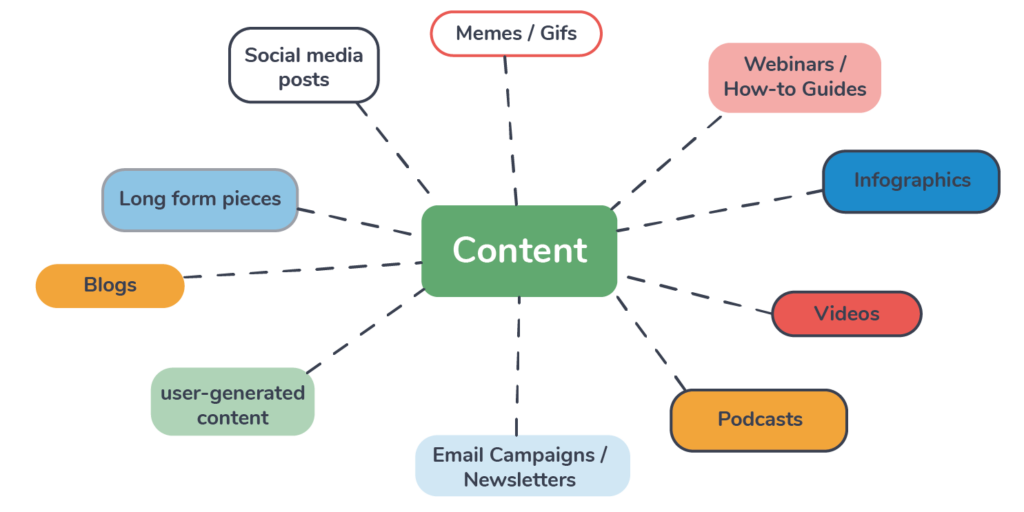
Microcontent is a self-explanatory term. Content, but smaller. It’s text, video, images, really any form of traditional content that is optimized for social media and can be consumed in 30 seconds or less. The latest trend in content marketing is adapted to the latest platforms, and modern attention spans. Microcontent provides enough time to tell your brand’s story and drive leads without requiring so much committed focus that it loses the attention of hyperactive social media users. It should be something your target audience can engage with, save, and ultimately share with other users in their network. Effective microcontent can stand on its own as a positive user experience, bringing value to the user before promoting brand offerings.
Creating microcontent is simple, as it is built from the pieces of a brand’s existing long-form content. Pull quotes can be made into actionable tips and tricks, key takeaways can be presented as small infographics or formatted lists. These tidbits can be combined with key brand messages to create card carousels that will function as the foundation for a social campaign. The microcontent creation process is all about taking the most critical elements from long-form work and formatting them into an easily digestible package that distills the essence of a brand. The trickier part is getting your microcontent in front of the right users and achieving positive engagements.
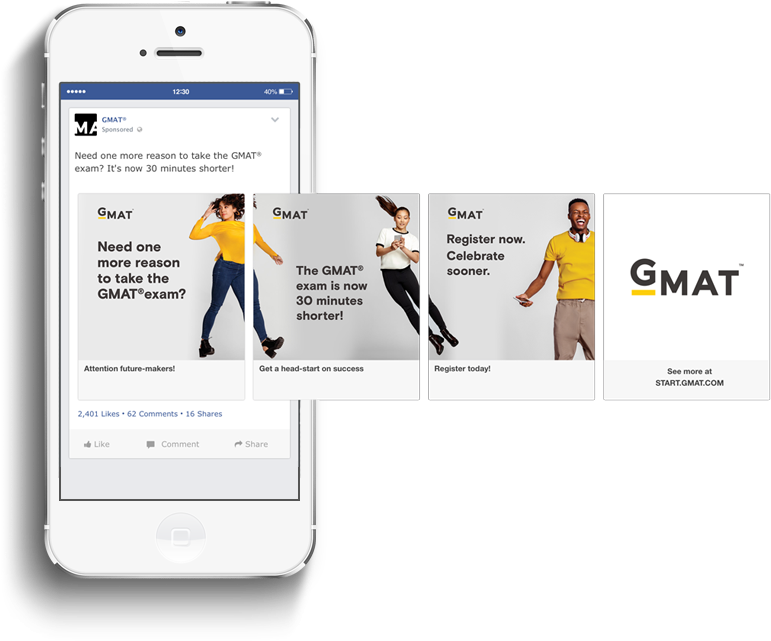
The rise of microcontent is not a self-contained trend. It’s part of a growing movement by many brands towards simplification in their messaging and content creation. As humans, we have an innate drive to simplify the complexity of the world around us, a trait referred to as the “Simplicity Principle.” The Simplicity Principle states that when our minds are presented with two options, one complex and one simple, we choose outcomes that we perceive to be as simple as possible. Ever feel overwhelmed by the 6,000+ instances of promotional content you see a day? You’re not alone, the surplus of stimuli actually has adverse effects on consumers and muddles the decision-making process. As technological advances and omnipresent social media platforms continue to make consumers’ lives exponentially more complex, they will embrace simplicity wherever they can find it.
Understanding this fact is more important for brands than it ever has been before. It only takes one look at the latest industry headlines mentioning VOD, AR, machine learning, the growing influence of big data, and countless other kinds of emerging tech to understand how consumers could feel lost. To truly reach and engage with its consumers, a brand must be able to break through the noise of the industry and present them with content that is digestible and impactful. Whether through microcontent creation or streamlining messaging about complex topics, modern brands must focus on being translators of the complex into the simple.
As a full-service digital marketing agency, Bluetext offers multiple services that can help your brand consolidate messaging into impactful and digestible content. Contact us today to learn more about our messaging and content marketing services.
Given the speed at which news is consumed today, timing is everything. Latching onto a rapidly developing news cycle is a great way to gain visibility for your brand, establish thought leadership on a topic and build relationships with reporters. Rapid response, or newsjacking, opportunities are when brands capitalize on breaking news to provide relevant commentary on the story while drawing attention to their own content.

As brand storytellers, we’re scanning the news daily for what’s happening in the industry, what brands are standing out, how our clients are showing up and more. Thus, implementing a rapid response strategy during your daily news scans is easy, time-efficient and can be very fruitful. However, there are a few things to be wary of, including sensitivities around the news, reaction time and offering valuable insights.
Read the Room
Not every breaking news story needs commentary. Consider the sensitivities around the developing story, read the room and evaluate if a comms strategy is necessary around this cycle. If yes, then designate who your spokesperson will be and develop your commentary.
Amid tragedy at a global scale, like social unrest, natural disasters or pandemic, it is best advised to redirect external communications to focus on internal messaging and making sure employees feel supported. Exploiting tragedy and proactively telling a reporter how a company’s software product might have altered a tragic situation can be perceived as insensitive and will put your brand in a negative light.
A prime newsjacking market is cybersecurity. There are countless hacks that offer opportunities for cybersecurity firms to comment on topics like how the hack occurred, how that kind of hack or bad actor will evolve throughout the year and beyond, background on the hack or bad actor, what cybersecurity protocols can be implemented to prevent the hack from occurring again and more. But the noisier the market (and there are thousands of cybersecurity vendors with something to say), the more you will have to carve out a defined lane and message that reporters will find of value.
Timing Is Crucial
News comes and goes fast. Rapid response opportunities work best when you’re the hare, not the tortoise. In your daily scans, once you see a trending piece or developing piece and think that news cycle will pick up, get ahead — reach out to your spokesperson, pick their brain about how the story will develop, compile their thoughts into a pitch and ship it off to relevant reporters. From there, wait for the story to develop and see if the reporter has any other questions.

Yes, and ?
While timing is crucial in rapid response opportunities, it isn’t everything. Messaging is just as important. It does help to be the first to comment, but other brands won’t be far behind, and if your messaging does not add value to the conversation, it will not be included. On top of that, given the opportunity is industry-wide, keep the commentary broadly applicable but nuanced enough to stand out. This is not the time to gush about your company and the latest products.
There is a time and place for everything. While we as communicators want to jump on as many opportunities as they come, we need to be cautious about the ever-changing news landscape, the sensitivities of the world and the reputational risk that comes with it.
To learn more about how Bluetext can improve your newsjacking processes and timing, contact us today.
Data privacy features can be overwhelming. Every time you visit a new site, you’re immediately prompted with the same spiel: “Hey! Is it okay if we take your data?” You probably click ‘yes’ just to get rid of the annoying pop-up.
But what happens when you click yes? How are publishers using your data? How are we — the consumer AND the advertiser — affected by these data protection policies?

Understanding Data Protection Policies
Data protection policies really started to emerge and take force in the past several years. The most widely known data protection policy is the General Data Protection Regulation (GDPR), which was implemented in 2018. GDPR, in short, is “a legal framework that sets guidelines for the collection and processing of personal information from individuals who live in the European Union.” You can learn all about GDPR and what exactly the regulation covers on the official GDPR site.
But say you are an American-based company, are you affected by data privacy regulations? Just months after GDPR was enforced, the California Consumer Privacy Act (CCPA) was launched. Similar to GDPR, “CCPA outlines how businesses can collect, store and transfer consumer data from Californian residents.” You can find out more about what the Act covers on the official CCPA site.
The launch of these two acts threw many users and advertisers for a loop. For starters, if users are visiting your site from California or Europe, your site must be compliant. And let’s not forget one of the hallmarks of the “worldwide web” — the ability to connect users across physical boundaries. Remember the pop-up boxes and prompts we talked about earlier? Those were implemented across sites based on these new data privacy laws. In order for websites to be compliant, there has to be an explicit opt-in consent message that appears as soon as users visit a site, and no data can be collected unless the end-user opts in. This is a change from traditional advertising regulations in America, which required the option to opt-out (does the “unsubscribe” button sound familiar?). If a company fails to comply with these policies, it could “face a fine. In most serious cases, this fine could be up to 17 million euros or 4% of a company’s annual turnover.”
Data privacy acts are no joke! It’s imperative that companies follow the correct guidelines to ensure sites remain compliant — both for the company’s sake and the consumer’s sake.

What Consumers Should Consider
The next time you are prompted with a consent message, just remember: if you click ‘yes,’ you are giving that company permission to collect and use your data. If this sounds eerily vague and leaves you questioning what a company wants from your data, you’re not alone. We encourage users to navigate to the privacy policy pages on sites before opting in; this way, you’ll know exactly how companies will use your data if you choose to click ‘yes.’
While “collecting data” sounds like a serious invasion of privacy, it’s worth noting that most companies only scrape the surface of data — data is usually anonymized and does not reflect any personally identifiable information (PII). Most companies know the importance of building trust with their consumers, especially as data privacy is at the forefront of most digital conversations. For this reason, companies are usually transparent in their privacy policy — showcasing exactly what data will be collected — and how that data will be used. Again, when in doubt, check out the site’s privacy policy page!
Many consumers have found that checking the ‘yes’ box does have its advantages. Have you ever visited an eCommerce site, eyeing a particular product, but passed because of the price tag? Many marketers set up retargeting campaigns — which are only activated if users accept the privacy policy — that enable them to serve product ads to users who leave the site without purchasing. If you’ve opted into the privacy policy, you might start to see ads of the product you wanted to purchase (or similar), and in some cases, a nice discount code will appear with the ad! In many cases, customers value the reminder to checkout their online cart and especially enjoy saving money in the process.
Another less obvious example is user experience. Websites will use consumer data to help create a more seamless experience for the end-user by understanding what the user is most interested in. We say this is ‘less obvious’ because when done right, you might think that the website is answering all your questions and solving your problems intuitively. Maybe it is — or maybe it’s the data talking.
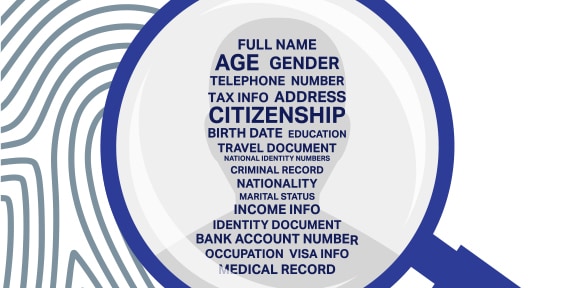
How Advertisers Should Navigate
As mentioned above, when it comes to data privacy and data protection policies, advertisers should prioritize consumers’ safety. In order to establish yourself as a trustworthy brand or company, make sure that you’re complying with all data regulations and are transparent with users about how their information is collected and used.
As long as you’re complying with data protection laws, you still have the same targeting capabilities. Here are some ways of leveraging data to build your brand’s digital presence:
- Create retargeting lists across platforms to follow-up with users who visited the site but didn’t convert, placing a more targeted ad in front of those end-users.
- Leverage compliant 1st party data to inform content development, predictive analytics, addressable advertising, and more.
- Learn and improve your site based on analytics data. If one of your most-visited landing pages has a high bounce rate and a low avg. time on page, work to determine why users are leaving the page, and update the UX to create a better landing page environment.
- Use the data you’ve collected from current users to reach new users who share similar digital attributes, also known as ‘lookalike audiences.’ Create lookalike audiences across paid media platforms such as Google Ads, Facebook, Twitter, and more.
The list can go on and on! But first: make sure your site is compliant, and make sure you’re putting the end user’s safety first.
Bluetext has learned a lot about data protection policies and data privacy over the years. We’re constantly adapting our site to make sure it’s up-to-date to remain compliant with data policies, ensuring consumer data is always safe. Visit our site to learn more about how we have achieved success while remaining compliant. And don’t worry, we won’t collect any data unless you’ve opted in!
The Latest in LinkedIn
LinkedIn is taking users’ ability to “connect” to the next level. This week LinkedIn is rolling out new profile features that will empower a whole new segment of users with the opportunity to become content creators and professional influencers. The professional networking platform announced the unveiling of a new “Creator Mode” to build their voice and audiences.
Social Platforms Taking a Cue from One Another
These new features are the latest of many social media shifts, as we notice a trend of social platforms taking cues from one another. Especially following almost a year of exclusively virtual networking, the media landscape is rapidly expanding to include a number of opportunities for professional and personal success. The rise of micro-influencers on Instagram, TikTok, Twitter, Clubhouse, etc. has earned the trust and loyal following of their audience members for a particular subject. There is no shortage of creative innovation on these platforms, with professionals having to develop unexpected use cases. For example, did you know personal finance TikTik was a thing? Yes, there is a growing community of young professionals offering personal finance and investment advice to followers of #FinTok or #StockTok. This just serves to show that social media platforms have much deeper opportunities for content creators than showing off their latest recipes and dance moves. With rising competition from emerging platforms, such as the audio-only app Clubhouse, or viral sensation Tik Tok connecting niche interest communities, LinkedIn is debuting similar features to remain the mainstay for professional networks. Users can now create stories (taking cues from Facebook, Instagram, and Snapchat), weigh in on trending topic hashtags (#thankyou Twitter), and now become content curators with “Creator Mode”.
Creator Mode & Influencer Opportunities
The new “Creator Mode” for LinkedIn allows users to pin specific hashtags to the top of their profile to signify the themes they frequently post about. With creator mode enabled, the presentation of profiles is altered to emphasize the hashtags directly under job titles. This moves up the “Activity and Featured” sections to highlight posts and links that a user shares before the “About” bio boxes. This shifts the content hierarchy from a self-written bio, to a curated collection of user-generated content. This allows users to focus their profiles on niche genres and topic areas to own a small space as thought leadership. In a nutshell, “Creator Mode” offers users an opportunity to connect on a more meaningful level to targeted audiences, therefore promoting themselves to influencers amongst their community.
Additionally, users can “Follow” these influencers rather than adding them to their personal networks. Now instead of feeling uneasy sending network invitations to a complete stranger, users can follow their favorite thought leaders just as easily as on other social networks.
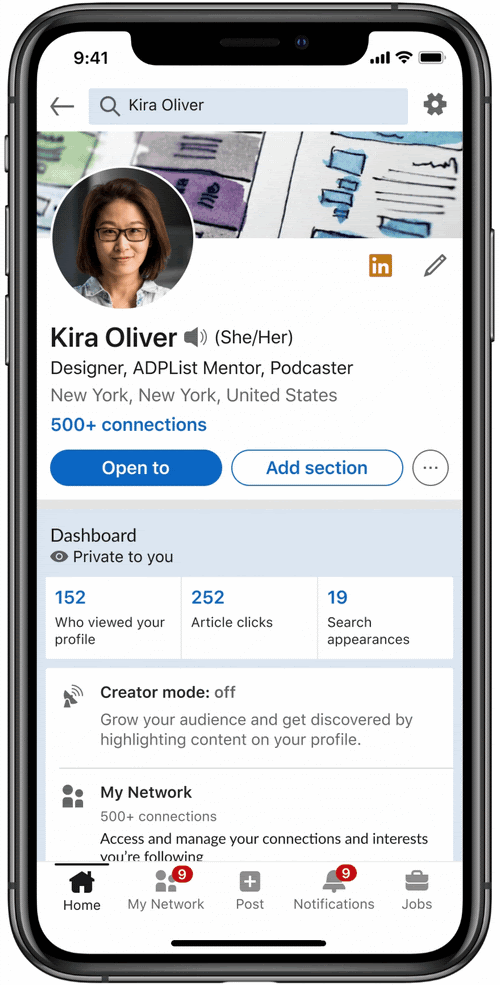
What else is included in this update? LinkedIn users can upload video cover stories, creating an interactive introduction to their profile. Much like a Facebook or Instagram story, the cover story can be initiated to play on the click of a profile photo with an orange ring. The uniquely new aspect of these cover stories is what is known as the “Harry Potter effect”, where the video will autoplay silently in the profile photo frame to signify available video content. These new features will help propel the already growing importance of video-based content on social platforms. Many users see this new video feature as an opportunity to promote themselves with a personalized pitch of their skill sets. Almost like a precursor to a job interview, it grants users the opportunity to conduct a virtual elevator pitch with all of the personality and zest of in person.
What Creator Mode Can Do For Companies
These new updates will be big for companies of almost any industry, but especially in B2B technology, cyber or complex services. Many of whom have been prioritizing thought leadership of leadership and SMEs through whitepapers, research, and media opportunities as means of generating industry attention to their brand. “As our ecosystem has been growing, and as we’re seeing the world of work changing, we’re seeing that content is now a core part of how professionals interact with not only their own jobs but their industries, their peers, and their communities,” Keren Baruch, group product manager for creator strategy at LinkedIn.
Last year 62.1 million LinkedIn users reported logging in at least once a month. This statistic is expected by researchers to jump to 64.7 million in 2021 and reach 70.9 million by 2024. The popularity of LinkedIn is expected to grow significantly, especially as users realize the unique opportunity to take control of their professional success and promote their achievements like never before. The barriers of entry for powerful brands and thought leaders have been lowered, which levels the playing field for companies of any size to become influential industry leaders.
Are you the next micro-influencer of your professional space? With the support of social media and PR agency, Bluetext, you could be! Contact us to learn more about our digital marketing and PR services.
You’ve crafted your brand message, settled on a new visual strategy, or launched your new product. So what’s next? You probably have the urge to shout your new message from the rooftops. But in 2021, you may need a more modern digital media strategy. Paid media is essential to put that message in front of your target audience. While earned media (i.e. public relations, email, organic search, organic social) is also an important part of GTM, paid media can both expand your brand’s current reach and reel in interested parties, and convert them into customers.
A Full-Funnel Approach Drives both Awareness and Acquisition
As a top digital marketing & design agency, we know that the funnel is everything when talking about paid media. Online user behavior is very rarely linear or systematic. Consider how you browse the web. Do you click on the first link you see and immediately start a purchase online? If you’re like most people, you click around, do an informed search, and learn more before making a purchasing decision.
Awareness Builds the Top of the Funnel
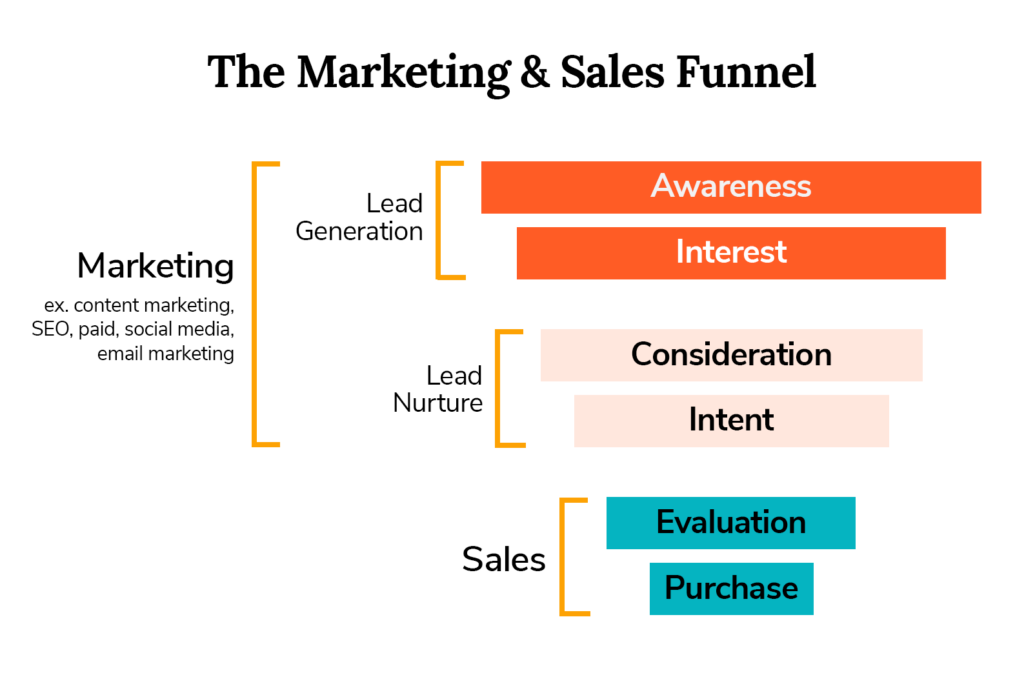
When crafting a digital media strategy, we account for user behavior by focusing on the overall user journey. That journey can be broken up into two main parts: awareness and acquisition. Each category has an ideal mix of channels and tactics that accomplish specific key performance indicators (KPIs). At the top of the funnel is awareness: a user’s understanding of your business or specific product. The KPIs for awareness are typically impressions or site visits – really just eyeballs on ads and on your site content.
Channels that we typically include in awareness campaigns include programmatic media (which includes display, native and video ads), paid social, and other advertising (billboards, podcasts, etc.). These ads are meant to capture a broad audience and expand the awareness of the business to new – and potentially lucrative- audiences. Within these channels, we also use tactics that will increase impressions and site visits. Third-party targeting (showing kitchen tool ads to someone marked as interested in cooking) is particularly helpful, as is contextual targeting (showing kitchen tool ads to someone browsing a recipe site).
As a top digital marketing & design agency, we craft awareness ads that grab user attention and build an informed target audience. Our client, Appgate, urgently needed to drive brand awareness traffic to the website, recently redesigned by Bluetext. To do so, our brand creative captured user attention with eye-catching motion and sustained interest with useful and digestible information. It is key your ads give just enough information to be helpful, but also entice someone to click the ad and learn more. Within one month, Appgate’s campaign had increased sessions to the landing page by 17% and drove a 25% increase in site engagement.
Acquisition Tactics Convert Qualified Audiences
While all businesses need to start with an awareness campaign, some also want to focus on the acquisition with lower-funnel tactics and conversion-focused KPIs. KPIs for this part of the campaign include engagements on the site (form fills, content downloads, subscriptions, etc.), conversion rate, and cost per acquisition (CPA).
There are many channels that can be used for acquisition campaigns, but one of the most common is paid search. Others include programmatic channels (display, native, video) and paid social. Account-based marketing – which targets specific businesses – is also more of an acquisition-focused tactic. Within these channels, the tactics that optimize toward acquisition are different. Retargeting (showing specialized ads to users that have visited or engaged with your site) is a commonly used acquisition tactic. All tactics and channels in an acquisition campaign rely on strong brand awareness. Paid search success, for example, regularly relies on traffic searching for a certain business or brand name. In addition, retargeting doesn’t build a new audience – it just converts the audience that has already interacted with your site.
Creative for acquisition campaigns are typically more urgent and action-based. Instead of “Learn More”, CTAs focus on specific actions (downloading a demo, registering for a webinar, etc.). Consider, for example, EXL. For this acquisition campaign, Bluetext focused on highlighting certain webinars and speakers, resulting in a 5% increase in ad click-through rate on programmatic display and a 185% increase on paid LinkedIn.

Upcoming Trends in Paid Media for GTM
All top paid media & content marketing agencies to know what’s ahead for GTM tactics and strategies. One major change on the horizon for paid media is the trend away from cookies and pixels. Though many companies have done internal media campaigns based on retargeting and third party targeting they’ve collected in the past, those tactics will become obsolete by the end of the year.
Privacy laws are becoming more prevalent and Internet browsers are moving away from collecting cookies – retargeting is becoming a thing of the past. In its place are solutions such as Google’s Federated Learning of Cohorts (FLoC), among others. Need help navigating the new media landscape? Contact the experts at Bluetext for all of your awareness and acquisition needs.
For many websites, organic traffic represents over half of their visitor volume. What’s scary, however, is that any company could lose the value of months (or even years) of consistent and diligent SEO work in mere seconds. The main culprit? Not resolving SEO issues in a timely manner. As companies and web traffic grow, it’s easy to ignore small SEO issues and add them to the ‘to-do’ list. Those SEO ‘to-dos,’ however, add up and can cause skyrocketing bounce rates and free-falling traffic. As a marketing data analytics firm, we’ve assisted countless companies with their SEO issues, helping to prevent ranking, conversion, and sales losses.
Google Search Console
As a content marketing analytics company, we rely heavily on Google Search Console, as it reveals so much of what’s going on with your site’s traffic. Given that it is such an incredibly powerful tool, it can be overwhelming to know what to look for without help from a marketing data analytics firm. Here are a few things you can find in Google Search Console that are invaluable for troubleshooting your organic search traffic:
- Site errors and warnings
- Search queries that help your site appear in search results
- A list of internal and external pages that link to your website
- Crawl rate and when Google accesses your site
Although not comprehensive, these metrics are a fantastic first step to properly diagnosing any organic search issues you might be having. If your car breaks down, the first place you would look is under the hood. If your organic traffic begins to break down, the first place you should look is Google Search Console.
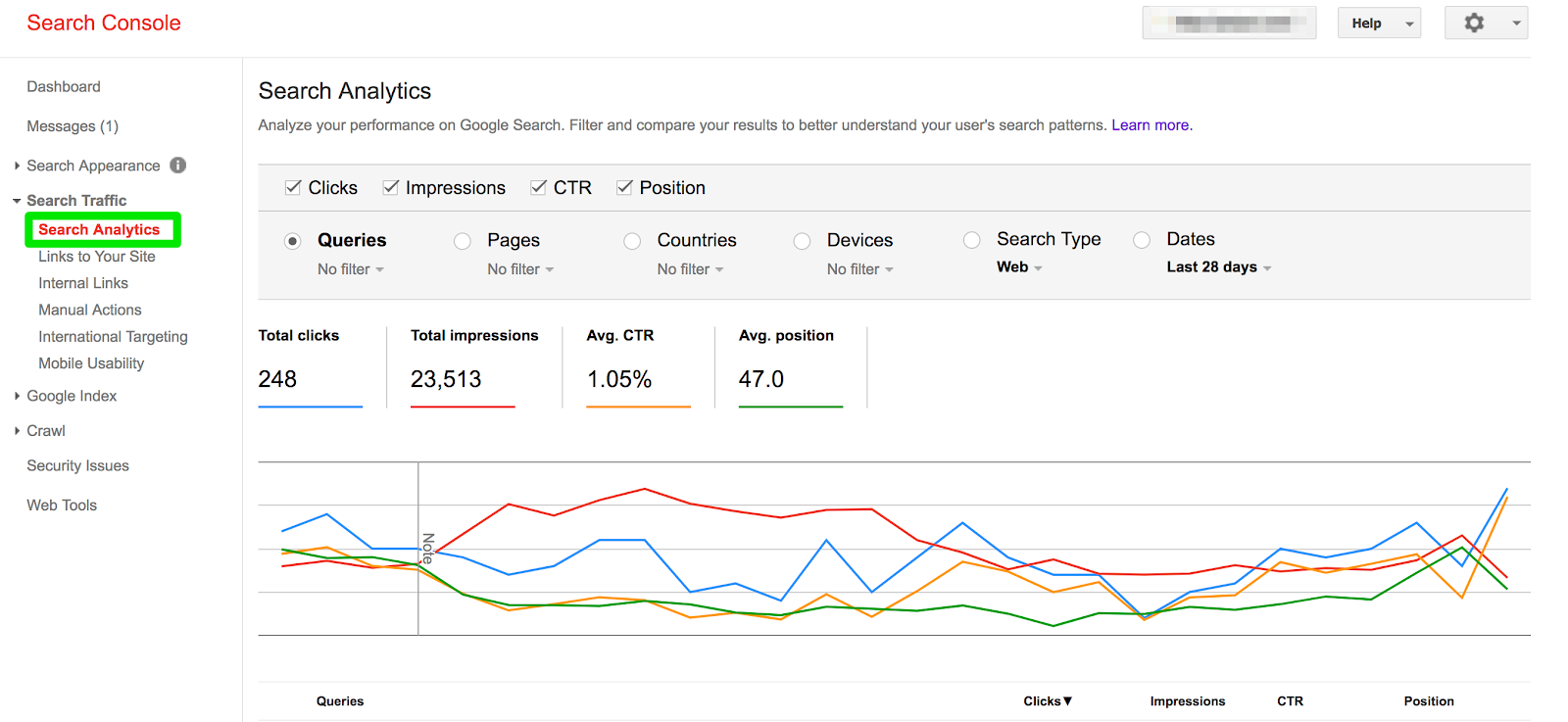
Algorithm Changes
Every year, Google changes its algorithm over 600 times. Needless to say, it can be difficult to keep track of every change. As a marketing data analytics firm, we understand how important it is to keep track of each and every iteration, as it makes it possible to determine what changes you need to make and when. There are plenty of resources – like Moz, Search Engine Journal, and more – you can use to learn how changes will impact what Google is penalizing, why Google is making changes, and how you can stay on Google’s good side. If you begin to see a decline in your search traffic, you should review these resources to ensure your website is compliant with Google’s policies.

Quality of Content
As a key focal point for Google’s algorithm, they have worked to prevent low-quality and thin content from appearing in search results. In short, search engines work to provide the results that best match the search intent of a user. If you want to rank highly, you have to convince search engines you’re answering the questions of users. With that, we live by a simple principle when it comes to organic search traffic: Content Is King. Ensure the content you are posting answers prospect’s questions, utilizes strong H1s and H2s, leverages strong supporting imagery (don’t forget alt. text!), and isn’t stuffed with unnecessary keywords.
Inbound Linking
Having inbound links is one of the most valuable ways to signal to Google that your website is high-quality and authoritative. In short, an inbound link is a link from another website to yours. Although highly valued in Google’s organic search algorithm, the tricky part about inbound links is that you have very little direct control over them. Should you see a decline in your organic and/or referral traffic, using link checkers like Smallseotools and majestic is a great way to determine if there has been an inbound link decline for your website. If this is the case, a couple of ways you can strengthen your inbound linking strategy is by writing guest posts on websites and creating valuable original content that other writers can use.

Sudden drops in any traffic channel are scary. Given that organic traffic is composed of high-intent users, it can be even more concerning, as it means fewer conversions and revenue. Should this ever happen to you, avoid panicking. At the end of the day, it’ll likely be something easily identifiable and can be remedied quickly in-house or with the help of a marketing data analytics firm.
Interested in working with a content marketing analytics company to help troubleshoot your organic search traffic? Contact Us!
- The COVID-19 Pandemic has expanded the “stay at home” audience for B2C businesses.
- The consumer sector has seen changes in how audiences are reacting to content and consuming media.
- Capturing these audiences will require businesses to adapt content and tactics to the current climate.
Over the past few months, we have all adjusted to new living and working environments. This means varying working hours, virtual gatherings and different web surfing, streaming and social networking habits. These changes have shifted the traditional marketing audience profile.
If your business is B2C, you should be aware of these audience changes and adapt your marketing tactics to keep up with the current trends. Here are a few ways that you can make sure your message doesn’t fall flat with the new “stay at home” audience.

The concept of a “stay at home” audience is not new. The number of remote workers in the U.S. economy has grown steadily over the past several years. Online graduate and undergraduate programs have grown more popular, and the number of parents staying home with new children was rising even before the pandemic hit. Not to mention the number of companies adopting a digital-first approach and offering remote positions. However, this pandemic has rapidly expanded the “stay at home” audience beyond traditional groups.
It is crucial that all businesses hit the right tone with messaging during the pandemic. This is a different, uncertain and potentially difficult time for everyone, so brands should adjust their tone to one of encouragement and solidarity. No one wants to see pure sales messages at this time. Potential customers need to feel supported and confident that every purchase is essential for them.
Content
There are a few ways that businesses can cater to new stay at home audiences, one of which is content. One way to show solidarity with customers that may be struggling is by providing giveaways or special promotions that you normally wouldn’t – so that customers think of you again when more normal times return. Another way to build a loyal customer base could be to utilize user-generated content. Social proof is powerful, and often someone else’s high opinion of your product or service can make the difference between a static audience and gaining new customers.
It’s a myth that content management can be intensive or even a time burden. Updating your content could be as simple as shifting your product or service message slightly to be more specific to the audience’s changing needs. Some common threads throughout this pandemic are self-care, virtual everything (happy hours, games, workouts, entertainment), home cooking and other hobbies, home design, athleisure, online learning, DIY, gaming and financial services. Even if one of these threads doesn’t match up to your business or services, try to find a way for your business to make home life easier. Stuck on how to adapt your content to resonate with consumers? Consult a content marketing agency, such as Bluetext, to identify trending but relevant topics to focus on.

Shifting Media Channels
Another way you can make sure you’re capturing your audience is shifting the channels you’re using. While traditional channels (including out of home, print and radio) have decreased significantly, digital channels have seen a large boom. According to Nielsen, media consumption rises by as much as 61% when consumers stay at home. This media consumption includes display media, social media, and all forms of TV, including traditional, CTV and OTT.
Recently digital media (and TV) channel inventories have been higher due to increased numbers of people streaming. Like a simple supply and demand equation, this leads to lower-cost opportunities to get in front of your audience. Paid search impressions are decreasing, but digital marketing analysts are seeing higher CTRs and lower CPCs, leading to more efficient media campaigns.
Target Audience Hours
The current pandemic has altered the where and when work takes place. With children home from school and most people working remotely, we’re seeing more employees working outside of 9 to 5 business hours. For consumer-focused businesses, this might mean shifting typical 9-5 workday restrictions so that your campaigns run all day instead of just non-work hours.

While no one is positive how long the effects of this pandemic will last, it is clear that the stay at home orders are changing how both consumer and business audiences are consuming media. Businesses must adapt to these changing audience behaviors and characteristics, not only to survive now but to better understand and cater to their target customers in the future. Need help capturing your changing audience? Call Bluetext.
